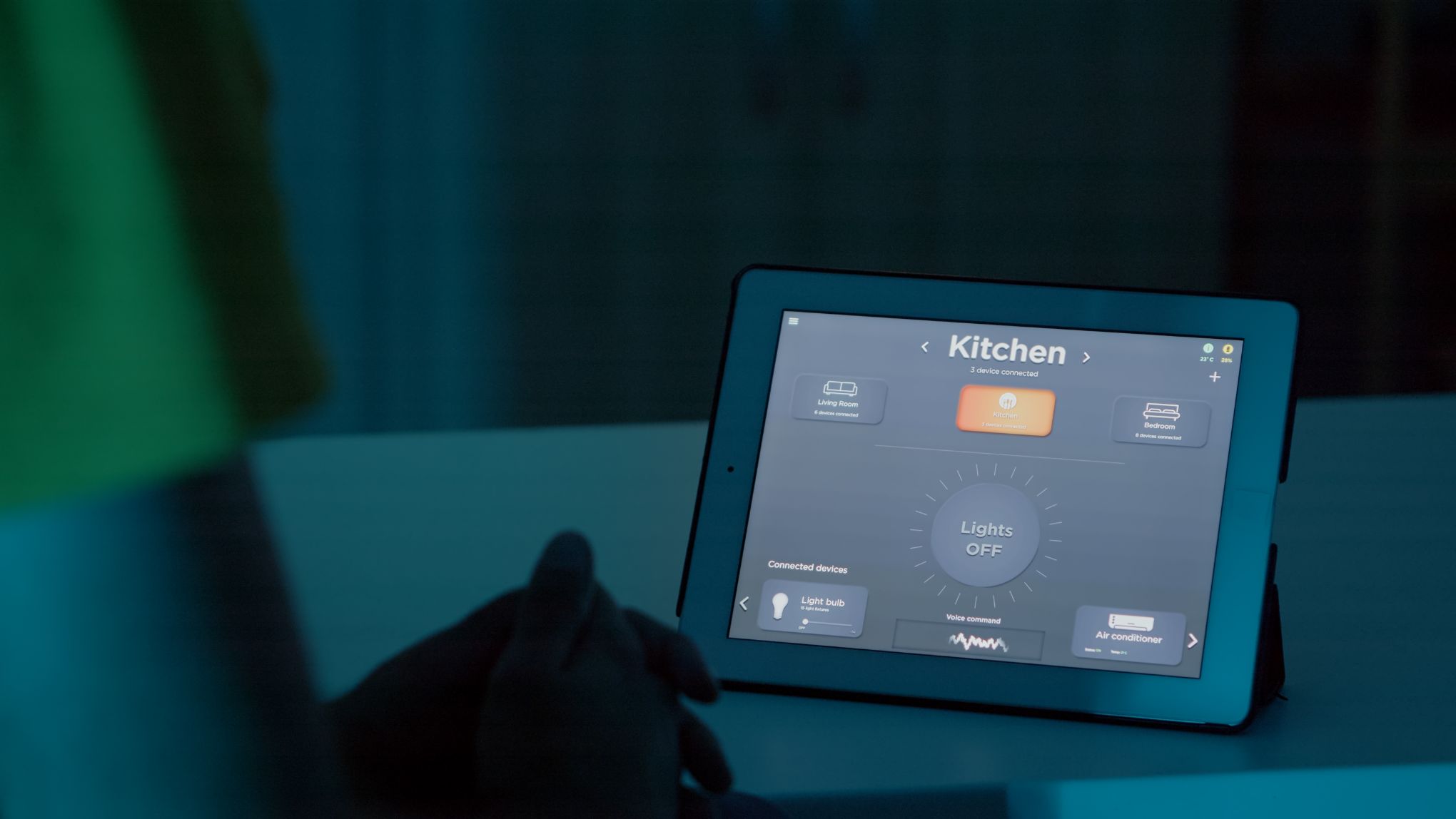In the ever-evolving landscape of modern technology, transforming your home into a smart and responsive living space has never been easier. Virtual assistants have revolutionized the way we interact with our homes, offering a convenient and intuitive means to control various smart devices. How can I integrate virtual assistants like Alexa into my smart home? To bring virtual assistants like Alexa into your smart home, you’ll need to go through a series of simple but important steps. You need to choose the right voice assistant, install its app, set up voice commands, create automated routines, add extra features, and keep everything updated. This guide will walk you through each step for a smooth smart home setup. Here’s a breakdown:
- Pick The Right Voice Assistant
- Install And Connect The App
- Set Up Voice Control And Profile
- Automate With Routines
- Enhance With Features
- Keep Things Up To Date
Pick The Right Voice Assistant

When embarking on your journey to integrate a voice assistant into your smart home, selecting the right one is a critical decision. Each of the major players in the voice assistant market – Amazon’s Alexa, Google Assistant, and Apple’s Siri – comes with its own set of advantages and disadvantages. Let’s delve into the pros and cons of each to help you make an informed choice.
Alexa: Amazon’s Voice Assistant
Alexa boasts extensive compatibility with various smart devices, making it a popular choice for smart home enthusiasts. You’ll find a vast array of “Alexa-compatible” devices on the market. This compatibility means you can likely find a smart device for almost any need, from lights and thermostats to robot vacuums and doorbells. The Alexa ecosystem offers a wide range of skills and customizations, allowing you to tailor your experience to your specific needs. These skills extend Alexa’s capabilities, enabling it to perform an impressive array of tasks, from ordering groceries to controlling your home entertainment system. Amazon’s Echo speakers and devices are designed to work seamlessly with Alexa, offering a variety of options for different use cases, from music streaming to home security. The Echo ecosystem provides a holistic smart home experience.
However, it’s crucial to note that Amazon has faced privacy-related scrutiny. Concerns have arisen regarding how voice recordings are handled and used by the company. While Amazon has made efforts to improve transparency and control over data, users should carefully review and adjust privacy settings to their comfort level. In addition, if you rely heavily on Google services, such as Gmail or Google Calendar, you might find Alexa’s integration with these services somewhat limited compared to Google Assistant. This can affect the seamless flow of information between your smart home and your other digital activities.
Google’s Voice Assistant
Google Assistant shines when it comes to answering questions and integrating with Google’s vast knowledge graph. It’s great for information retrieval and general knowledge, making it an excellent choice if you frequently seek answers or need assistance with web searches. If you use Google services extensively, like Google Photos or Google Drive, Google Assistant offers seamless integration. This ensures that your smart home interacts smoothly with your other Google-based digital activities. Google Assistant’s natural language processing capabilities make it excellent at understanding context and conversational interactions. This feature contributes to a more natural and engaging user experience.
Similar to other voice assistants, Google Assistant collects data to improve its services, which may raise privacy concerns for some users. While Google has implemented measures to enhance user privacy, it’s important to be aware of the data-sharing aspects of using this assistant. Historically, Google Assistant has had somewhat fewer compatible smart home devices compared to Alexa. Although this gap is closing over time as more devices become compatible, some users may still find the ecosystem somewhat limited in terms of smart home choices.
Siri: Apple’s Voice Assistant
If you’re fully immersed in the Apple ecosystem with products like iPhones, iPads, and HomeKit-enabled devices, Siri offers seamless integration with these devices. This ensures a cohesive user experience across your Apple devices and your smart home. Apple has a strong commitment to user privacy and employs on-device processing for many Siri interactions, reducing the amount of data sent to servers. This privacy focus may be particularly appealing to users who prioritize data security.
Siri’s compatibility with non-Apple smart home devices may be limited compared to Alexa and Google Assistant. This means you may have fewer choices when it comes to selecting smart home devices that work with Siri. While Siri has improved over the years, some users find it less accurate in voice recognition and understanding natural language compared to its competitors. This can occasionally lead to frustration when interacting with the voice assistant. The choice between Alexa, Google Assistant, and Siri largely depends on your existing ecosystem, your specific use cases, and your privacy preferences. Assess your needs, consider the pros and cons, and choose the voice assistant that aligns best with your smart home vision.
Install And Connect The App

Once you’ve made the pivotal decision of choosing the right voice assistant for your smart home—be it Alexa, Google Assistant, or Siri—it’s time to enter the world of seamless home automation by installing and connecting the dedicated app. This app will become the central hub for controlling your smart devices, creating routines, and customizing your smart home experience.
Installing the app is usually a straightforward process. You can find it in your device’s app store—whether you’re using an Android or iOS smartphone or tablet. Simply search for the app by its name (Amazon Alexa, Google Home, or Apple Home), download it, and follow the on-screen prompts for installation.
Once installed, open the app and begin the process of connecting it to your voice assistant. This step typically involves signing in with your respective account (Amazon, Google, or Apple) and linking your voice assistant to your Wi-Fi network. This connection is essential for your voice assistant to communicate with your smart devices, access the internet, and execute your voice commands effectively.
Think of the app as your smart home’s command center—a digital dashboard where you’ll configure and fine-tune your devices, create automation routines, and set up voice profiles.
It’s the bridge between you and the interconnected world of your smart home. From here, you can proceed to tailor your smart home experience to your preferences, ensuring that your voice assistant seamlessly integrates with your daily life.
Set Up Voice Control And Profile

As you embark on the journey to make your home smarter and more convenient, the next crucial step is setting up voice control and creating a personalized voice profile. These elements are the keys to unlocking the full potential of your smart home, allowing you to interact with your devices effortlessly and tailor your experience to your preferences.
Voice Control
Voice control is the heart and soul of your smart home experience. It’s what allows you to communicate with your voice assistant, such as Alexa, Google Assistant, or Siri, using natural language. Instead of fiddling with buttons or apps, you can simply speak your commands, and your voice assistant will spring into action.
To initiate voice control, all you need to do is utter your voice assistant’s wake word, which acts as a trigger to let it know you’re ready to give a command. For example, saying “Alexa” wakes up Amazon’s assistant. Once it’s awake, you can ask it to perform various tasks or control your connected devices. For instance, you can say, “Alexa, turn off the living room lights,” and your voice assistant will promptly carry out your request.
Voice Profile
Now, let’s take your smart home experience to the next level with a voice profile. Think of a voice profile as a way for your voice assistant to recognize you personally. This feature is particularly valuable in households with multiple users because it ensures that your voice assistant knows who’s speaking and can tailor responses accordingly.
Setting up a voice profile typically involves a series of voice recognition exercises. Your voice assistant will guide you through these exercises, asking you to repeat specific phrases or commands. By doing so, it gets to know the unique nuances of your voice, from the pitch to the pronunciation.
Once your voice profile is established, your voice assistant becomes remarkably adept at distinguishing your voice from others in your household. This means that when you say, “Turn off the lights,” it knows it’s you speaking and carries out the command accordingly. If someone else tries the same command, the voice assistant will recognize the difference and respond accordingly. It’s like having a personalized butler in your smart home.
In essence, voice control and voice profiles are the dynamic duo that transforms your smart home into an intuitive and personalized haven. They streamline your interactions, making them more natural and effortless. With voice commands and profiles, your smart home feels like an extension of yourself, responding to your needs and preferences with precision and convenience.
Automate With Routines

With your voice assistant selected, app installed, and voice control and profiles configured, it’s time to embark on the next phase of your smart home journey: automation through routines. This step empowers you to create an incredibly efficient and tailored living environment that seamlessly integrates your smart devices, anticipates your needs, and simplifies your daily routines.
Understanding Routines
Routines, in the context of a smart home, are essentially pre-defined sequences of actions triggered by specific events, schedules, or voice commands. They serve as the choreographers of your smart home, orchestrating your devices to work together harmoniously without requiring your constant attention. The essence of routines lies in their ability to customize your home’s responses to your lifestyle.
Creating Routines
To begin automating your smart home, you’ll utilize the app associated with your chosen voice assistant to set up routines. These routines can be as straightforward or intricate as you desire, depending on your specific needs and the devices at your disposal. Here are some practical examples to illustrate their versatility. Imagine starting your day with a “Morning Routine” initiated by a simple voice command, gradually brightening the lights, adjusting the thermostat to your preferred temperature, and playing your favorite morning playlist.
Picture the convenience of a “Movie Night” routine that dims the lights, lowers the blinds, and powers up your home theater system, all with a single voice command.
Also, consider the ease of a “Bedtime Routine” that locks doors, turns off lights, and creates the perfect sleeping environment, activated by merely saying goodnight. Envision the peace of mind afforded by an “Away Mode” routine that simulates your presence by intermittently turning lights on and off, enhancing your home’s security when you’re away. The beauty of routines is their adaptability to your lifestyle and preferences. You can craft custom routines to suit your unique needs, combining various actions and triggers to achieve precisely what you want.
Triggers And Command
Routines operate on the foundation of triggers and actions. Triggers are the events that initiate a routine, whether it’s a specific time of day, a voice command, or a change in the status of a device (such as motion detection). Actions, on the other hand, are the tasks you want the routine to perform, such as adjusting lighting, modifying the thermostat, or triggering music playback. The true magic of routines comes to life when you integrate them with voice commands. Instead of manually interacting with each device, you can simply speak a predefined voice command like “Start my evening routine,” and your voice assistant will seamlessly execute all the associated actions in one cohesive sequence.
Benefits Of Automation
Automating your smart home with routines offers numerous benefits including convenience, energy efficiency, security, and personalization. Routines eliminate the need for manual control, simplifying your daily routines and making life more convenient. You can optimize energy consumption by scheduling devices like lights, thermostats, and appliances to operate efficiently and minimize waste. Automation enhances home security by enabling you to simulate occupancy and monitor your property remotely, adding an extra layer of protection. Routines are highly customizable, ensuring that your smart home caters to your unique preferences and lifestyle. By embracing automation through routines, you’re not only making your life more efficient but also enhancing your overall smart home experience. It’s akin to having a personal assistant dedicated to managing your home, ensuring that your daily routines run smoothly and that your living space is always attuned to your needs and preferences.
Enhance With Features

In the ongoing evolution of your smart home journey, the phase of enhancing your experience with features is where you can truly make your living space uniquely yours. Beyond the foundational steps of setting up voice control, routines, and device connections, this stage invites you to explore the full potential of your chosen voice assistant, whether it’s Alexa, Google Assistant, or Siri.
Customizing Your Smart Home
Enhancing your smart home begins with customization. It’s about fine-tuning your smart assistant to align seamlessly with your preferences and daily routines. This customization extends well beyond basic tasks like turning lights on and off or adjusting your thermostat. It’s about discovering additional services, integrations, and skills that can elevate your smart home to new levels of functionality. Your smart home is likely to comprise devices from various manufacturers. To enhance your experience, ensure that your voice assistant seamlessly integrates with these devices. Most major smart home brands offer compatibility with popular voice assistants, enabling you to control a diverse range of devices, including lights, thermostats, cameras, and locks, through intuitive voice commands.
Voice Assistant Skills And Hubs
One of the standout features of voice assistants is their expansive ecosystem of skills and actions. These skills are akin to digital apps that expand your voice assistant’s capabilities in various domains, from productivity and entertainment to home automation and beyond. By exploring and enabling relevant skills, you can tailor your voice assistant to your specific interests and needs, creating a personalized smart home experience. Some voice assistants offer smart home hubs or speakers with built-in smart home control capabilities. For example, Amazon Echo Plus and Google Nest Hub serve as hubs themselves, directly communicating with and controlling compatible smart devices without the need for additional hubs or bridges. This streamlined approach simplifies your setup and enhances the overall efficiency of your smart home.
Stay Curious And Explore
The world of smart technology is dynamic and continually evolving. New features, integrations, and skills emerge regularly, expanding the possibilities for your smart home. To maximize your experience, maintain a sense of curiosity and exploration. Peruse the skills marketplace, check for updates, and stay informed about the latest innovations that can enhance your daily life. Enhancing your smart home with features is about personalization and adaptation. By customizing your voice assistant’s capabilities, integrating seamlessly with your devices, and embracing innovation, you’re ensuring that your smart home remains a dynamic and responsive part of your life. This journey of discovery can make your daily routines more convenient, efficient, and enjoyable, offering a truly tailored smart home experience.
Keep Things Up To Date

In the ever-evolving landscape of smart technology, staying up-to-date is not just a recommendation but a necessity. Your smart home ecosystem, complete with voice assistants, interconnected devices, and their respective applications, requires regular maintenance and updates to ensure smooth and secure operation over time.
Why Updates Matter
Updating your smart home components serves several critical purposes. First and foremost, it addresses security vulnerabilities. As technology advances, so do the tactics of potential hackers. Manufacturers are continually identifying and patching security flaws to protect your devices and data. By keeping your devices and apps up-to-date, you’re effectively fortifying your smart home against potential threats.
Secondly, updates often introduce new features and improvements. These updates can enhance the functionality, usability, and compatibility of your devices. You may discover that a firmware update for your smart thermostat improves energy efficiency or that a voice assistant update introduces new voice commands or integrates with additional services.
How To Keep Things Up-to-Date
Maintaining your smart home’s health begins with a proactive approach to updates. Most smart devices receive updates automatically or prompt you to install them when available. Be sure to allow these updates to install, as they often address security issues and improve device performance. Keep the app associated with your voice assistant up-to-date. Manufacturers regularly release app updates that improve functionality, security, and compatibility with new devices. If you’ve enabled third-party skills or apps within your voice assistant’s ecosystem, check for updates within these apps as well. Developers frequently release updates to enhance performance and add new features. Manufacturers of smart speakers and hubs, such as Amazon Echo or Google Home, periodically release firmware updates. Ensure that your devices are set to automatically install these updates or check for them manually. Make it a habit to periodically review your smart home setup. Check for any devices or apps that may need updates, and perform these updates promptly.
Privacy Considerations
While keeping your smart home up-to-date is essential, it’s also vital to maintain control over your privacy settings. With each update, review the permissions and data-sharing settings for your devices and apps. Manufacturers are becoming increasingly transparent about data collection and usage, allowing you to make informed decisions about the level of data you’re comfortable sharing. The longevity and security of your smart home depend on your commitment to regular updates. By staying vigilant and ensuring that your devices, apps, and voice assistants are up-to-date, you not only protect your investment but also enjoy the latest features and improvements in the world of smart technology. It’s a small yet crucial step in the ongoing journey to maximize the potential of your smart home.
In the exciting world of smart homes, we have embarked on a journey filled with possibilities. After learning how to choose the perfect voice assistant, create seamless automation with routines, and enhance your experience with features and updates, now, it’s time to take action. Start by selecting the voice assistant that resonates with your needs, set up voice control and personalized profiles, automate routines, explore new features and integrations, and remember to keep your smart home updated for the best experience. Embrace the potential of your smart home, and let it transform your daily life. Your journey is just beginning, so go ahead, and make your home smarter by using our product recommendation!
